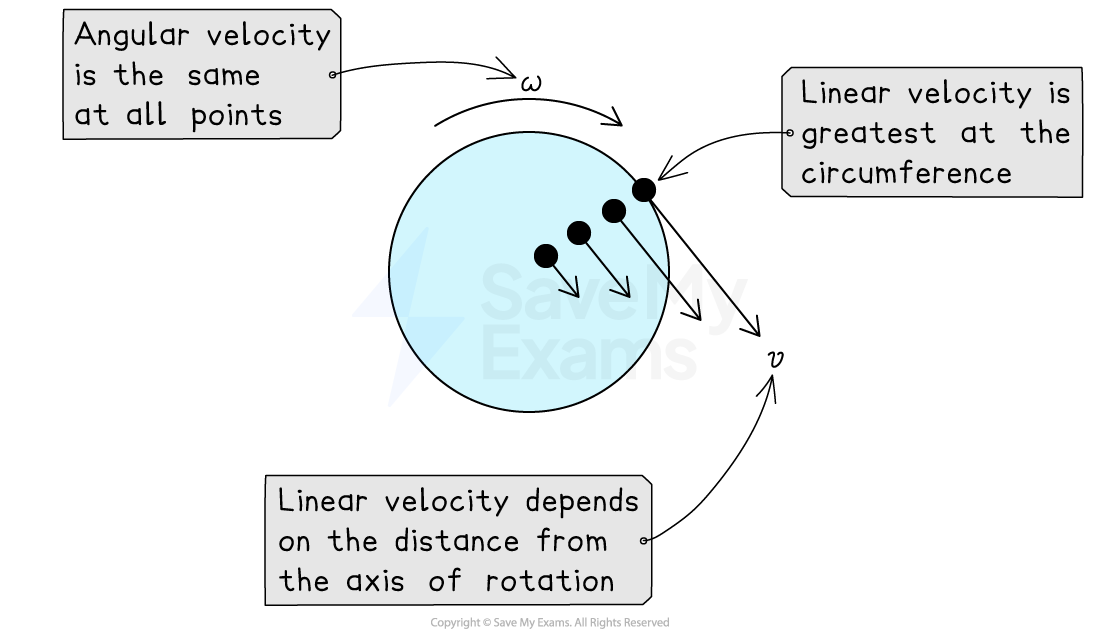Connecting Linear & Rotational Motion (College Board AP® Physics 1: Algebra-Based): Study Guide
Connecting linear & rotational motion
The rotational quantities that describe a point on a rotating rigid body can be related to their corresponding linear quantities
Summary of linear and angular variables
variable | linear variable | angular variable |
|---|---|---|
displacement | ||
velocity | ||
acceleration |
Linear and angular displacement
For a point on a rigid system that rotates about a fixed axis of rotation, the linear distance traveled by the point is given by:
Where:
= linear distance traveled by the point, in
= angular displacement of the point, in
= distance from a fixed axis of rotation, in

Linear and angular velocity
The linear velocity of a point on a rotating rigid body is equal to the linear distance traveled by the point divided by the time
The angular velocity of the system is equal to the rate of change of angular displacement
Therefore, the linear speed of a point is related to the angular speed of the system by the equation:
Where:
= linear speed of a point, in
= angular speed of the system, in
= distance from a fixed axis of rotation, in
For a rigid system, all points within that system have the same angular velocity
However, not all points have the same linear velocity
The relationship above tells us the linear velocity of a point:
increases with distance from the axis of rotation
has a maximum value at the radius of the system
is zero at the axis of rotation
The linear velocity of a point on a rigid rotating body is also known as its tangential velocity
This is because the instantaneous direction of the velocity is always at a tangent to the direction of rotation

Linear and angular acceleration
The tangential acceleration of a point on a rotating rigid body is equal to the rate of change of linear velocity at that point
The angular acceleration of the system is equal to the rate of change of angular velocity
Therefore, the tangential acceleration of a point is related to the angular acceleration of the system by the equation:
Where:
= tangential acceleration of a point, in
= angular acceleration of the system, in
= distance from a fixed axis of rotation, in
For a rigid system, all points within that system have the same angular acceleration
Examiner Tips and Tricks
While there are many similarities between the angular quantities used in this topic and the angular quantities used in the circular motion topic, make sure you are clear on the distinctions between the two, for example, angular acceleration and centripetal acceleration are not the same thing!

Unlock more, it's free!
Did this page help you?